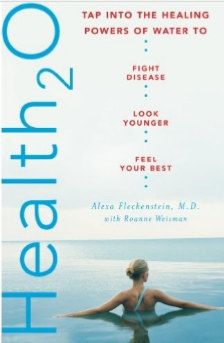There has been a great deal of interest on this blog lately about the foxglove plant, so I asked herbal expert and integrative physician Alexa Fleckenstein, M.D., to give us some background. Here is what she wrote:
Foxglove is a beautiful plant in the garden – it likes a moist soil. The pinkish bells on graceful spikes cheer me up. Moreover, it self-seeds when it likes its home – carefree summer joy. It seems.
Foxglove is also one of the deadliest plants when ingested. The powerful medication digitalis has been derived from the plant to help ailing hearts. The story goes that William Withering (1741-1799) became aware of people self-medicating the “dropsy” (body swelling from what we now call congestive heart failure) with this plant; he then searched for the “active” ingredient and found it in digitalis.
Digitalis is safer than the mother plant because in a plant it is difficult to gauge the poisonous quantity the patient is ingesting. Even with digitalis, we physicians rely on a blood test to tell us whether the patient is receiving a safe dose. We say the therapeutic margin is narrow – which means it is but a small step between digitalis helping the heart and digitalis killing the patient.
For these reasons, I would not recommend adding foxglove into your home herb chest. Better to rely on herbs that are safe. With my patients I rely on herbs that have a large therapeutic margin. It is close to impossible to kill yourself with peppermint, for instance (don’t try at home – because, as Paracelsus knew, every single agent in the world can become poisonous if we ingest a large enough dose of it; sugar is a prime example; even water!).
How do we know an herb is safe? Often, they have been tested through centuries or millenniums of use. One person who developed a list of about one hundred safe herbs was Sebastian Kneipp (1821-1897). Better known for his “cold water cure,” Kneipp had learned about plants from his mother, who was the herbalist of the little village in Bavaria where he grew up. He tried to get away from the cold water (a long story, which I will tell you another time!), and therefore systematically searched for herbs that people could use for themselves, experimenting on himself for safety. Nowadays, science has better tools to examine an herb. Of the about one hundred herbs Kneipp had deemed safe, only abut three were removed from the list by the famous Commission E (which studies herbs for safety and efficacy in Germany).
The “safe” herbs can – and should – be used for everybody. And they should be taken whole – in a reputable tincture or a tea – and not manufactured and put into a pill. Because the plants have evolved with us over millions of years; their biochemistry fits into our physiology like a key in its lock. The many different compounds of a plant work in “synergy” (all for the same purpose – or: The sum is more than its parts. If you are interested in herbal synergy, I have written about it in my book).
Beautiful as it is, foxglove is an example of an unsafe plant – it belongs only in the hands of an experienced herbalist or your doctor. So content yourself with admiring the lovely foxglove flowers, and make yourself a nice cup of soothing herbal tea. Try lemon balm!
More about “the power of the flower.”




